By Suzanne A. Marshall from the January 2018 Edition
Part two
In my last article, I promised to share some additional practical information about beachside living. Moving past window coverings and furniture upholstery, here are few more tips I am sharing in order to save you inconvenience and cost. I know myself that, as a Canadian girl off the prairies, I had a lot to learn about managing the sea air and humidity. Where I come from, the climate is so dry that the dust floats in the air and static electricity would often catch me off guard when flipping a light switch or running a brush through my hair!! Zap..Zap!!! This is certainly not an issue here in Manzanillo. I did have a lot more to experience and learn.
Let’s talk ceiling fans for starters. During the hot humid months in the tropics, ceiling fans are pretty much an essential in most living areas. Our condo has them everywhere, the bedrooms, living room, dining room and terrace. I even had one installed in a bathroom vanity area. Though we use air conditioners in the bedrooms sparingly at night, the breezes provided by ceiling fans are life changing. My advice is to ensure that the fan blades are solid plastic. That said, I don’t believe I’ve ever seen ceiling fans where the centre housings for the motors are not made of metal.
Structurally, it’s simply necessary, especially considering the force of the cycling blades and the attachments to the ceilings and so on. But we have seen fan blades that are actually made of pressed or composite fibreboard with a lacquered finish. They look great, but unfortunately they eventually absorb the humidity and begin to expand and droop. One of our neighbour’s fan blades actually thickened to several inches. I was quite astonished.
The only really serious rusting issue we’ve had with fans is the unit that we installed on the outside covered terrace. Though they are finished with glossy enamel, we are on our third unit. But, by now, I’ve found yet another great product at the local Home Depot store. Thus far, it appears to be quadrupling our time span before replacement. It’s called RUST-OLEUM.
When the fan housing begins to show telltale signs of that orange/rusty color, it’s time to get up on your ladder and give the area a spray of ‘Rustoleum’. It covers the affected area and staves off the progress of the rust. For me, this product is a staple in the house. It is available in a rainbow of colors and also in transparent. I am using it everywhere I see problems starting.
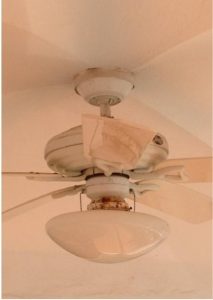
above the light
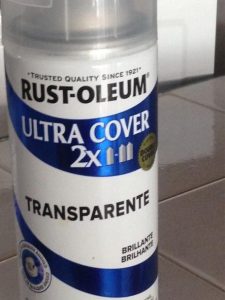
I have a particular affinity for metal sculptured artwork. Wouldn’t you know that I started a collection of these pieces well be-fore I understood the risk of the seaside air? I simply assumed the baked finishes and varnish would be enough. Wrong again. As time wore on, I began to see pitting on some of these and more telltale signs of oxidation. Soon, I was scouring the hard-ware and paint sections of the stores looking for anti-rust products and thus fell upon the Rustoleum displays.
I purchased the white enamel for the fans and transparent spray cans for the art and began the work of spraying the fan outside (repeating as necessary). Next, I removed all the metal artwork from our walls. I then started to brush and clean them front and back and then stepped outdoors with drop-sheets etc., to liberally apply the transparent spray lacquer front and back. Once dry, they looked as good as new and have been re-turned to their places on the walls. Color me happy, though I remain vigilant.
Loving the Mexican touches in our condo, I have also purchased two lovely tin tooled artisan mirrors. One did not survive
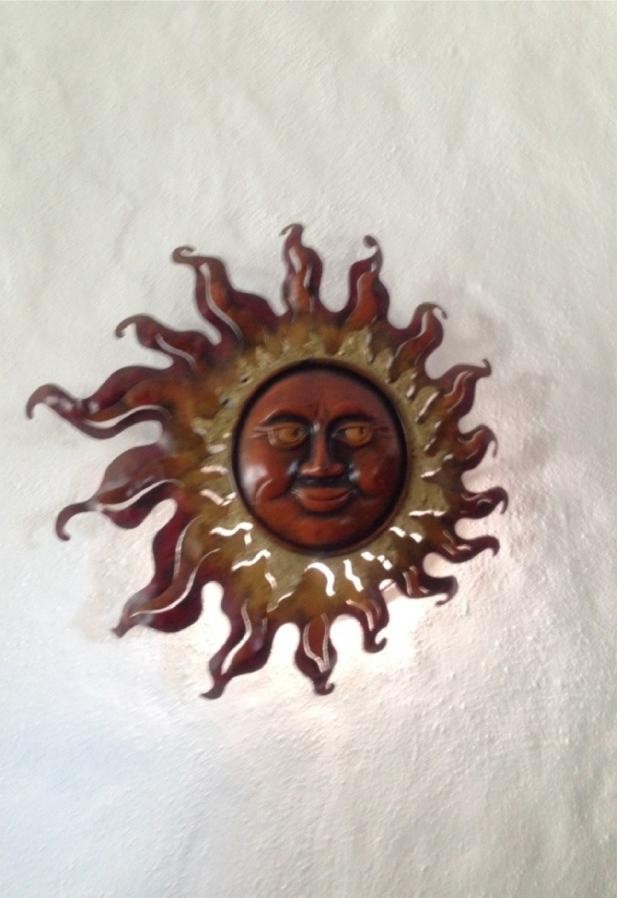
artisan markets
and became so badly oxidized it had to be recycled. The other has survived much better since, by then, I had discovered the Rustoleum product and began to apply the silver color spray on the framework. This has stalled the corrosion but I am quite sure it has a limited life cycle since, once the deterioration starts, it subtly eats away underneath. The renewed frame does not have the glossy finish of the tin but it does suffice. Should I be tempted to purchase another, I’ll likely choose the bronzed color option and give it a thorough clear coat of spray before putting it up on the wall. Again, it’s a “live and learn” situation.
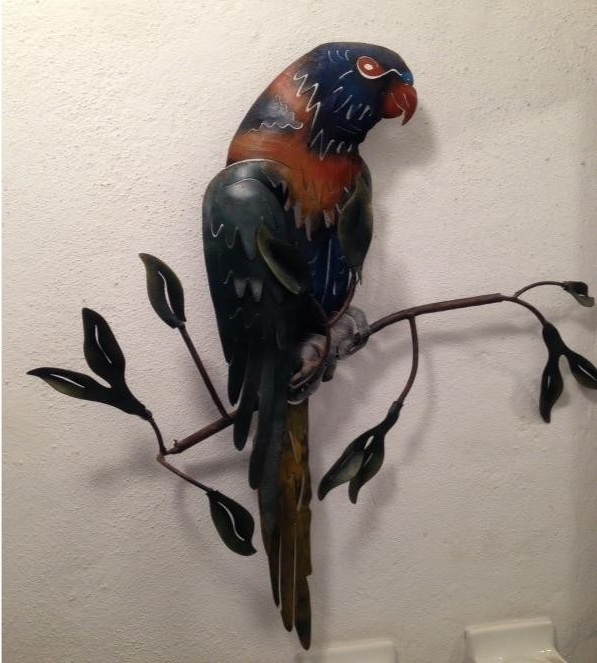
Another example of Mexican metal artwork from the markets.
Let’s turn our attention now to appliances. Well this is another frustrating story. If you’re a fan of the popular polished aluminum appliances, you’re likely going to have problems. I have opted to hang on to the old white enamel fridge we inherited with the condo for two reasons: the enamel doesn’t rust and the older model fridges seem to be a better quality operation-ally than the new products which are mass produced offshore in areas such as Korea etc.. Though it isn’t pretty, this fridge just keeps going and going though decades old.
I do have friends who’ve purchased a new fridge only to face replacement in 2-3 years. Not only do they no longer function as well but the polished aluminum surface has begun to pit and doesn’t look good at all. So I live with the fridge we have and will figure out the next step when it fails. If at all possible I would suggest that you shop for a white enamel type fridge if you have the option. Hopefully they’ll be back in style soon.
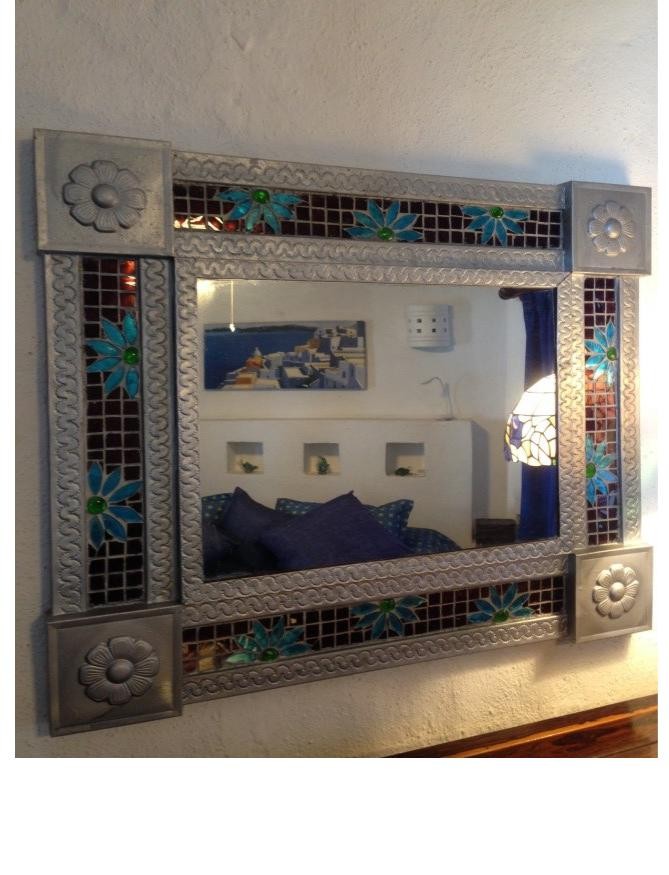
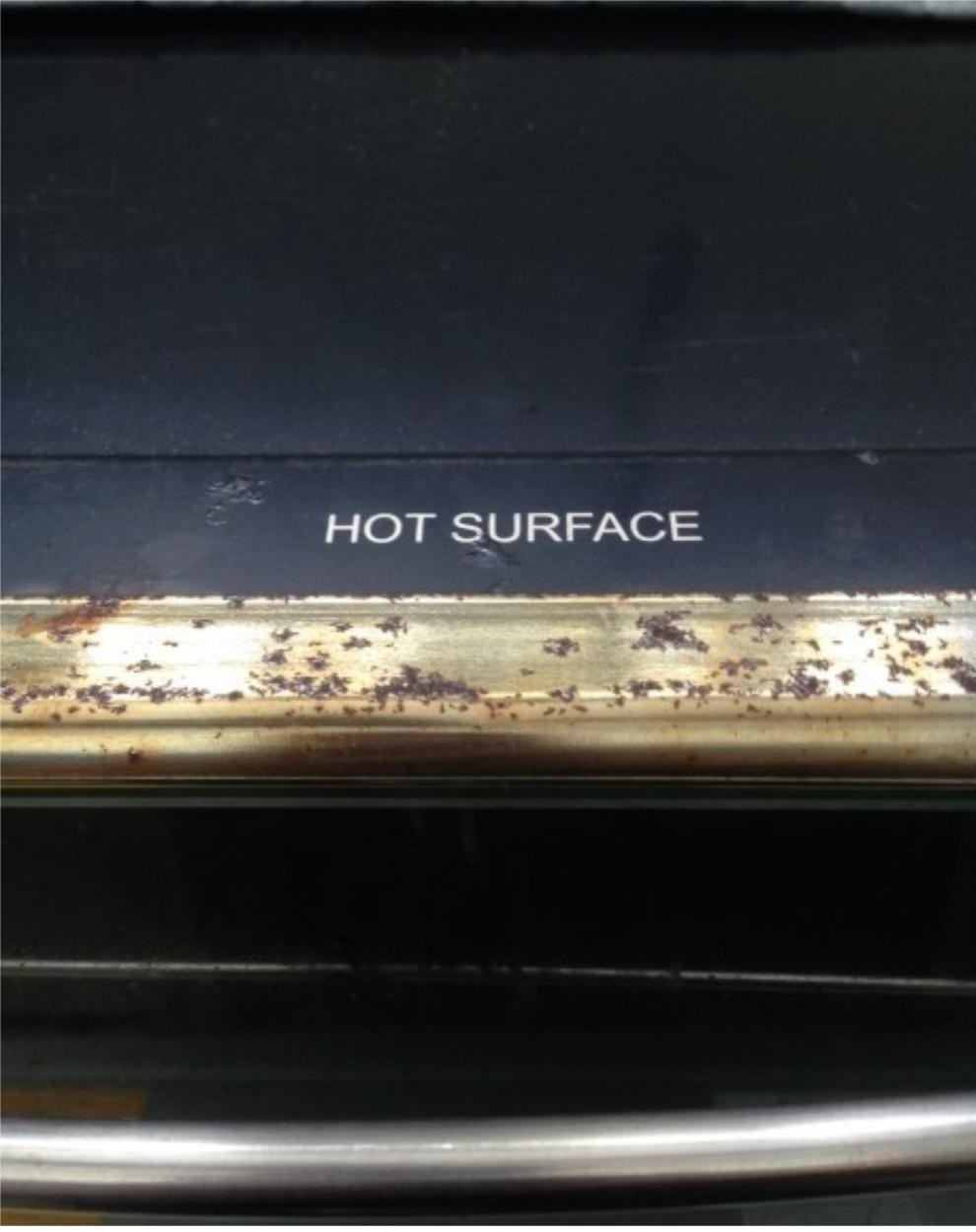
That being said, we’re now on our third microwave. Though the finishes are also an issue, additionally, these appliances seem to gather moisture inside the unit and the power cords and eventually they just ‘short out’ or ‘blow’. The last microwave that failed on us sounded like a cannon going off and smoke came curling out of the door. Thankfully, they aren’t that expensive anymore. The only mitigating idea I’ve come up with so far is to put a very good appliance cover over them when not in use.
I have done this with the microwave oven and toaster-oven and believe it’s making a real difference. The covers that I’m using are a metallic material with a thick flocked backing. It is very good for preventing moisture from settling on the appliances and hopefully from the moisture finding its way inside to the electronics. I have included a photo of the trim on my countertop convection oven. This demonstrates the type of corrosion that takes place where the metal trims etc. are located. Too bad I hadn’t been covering it up in between uses. I know better now.
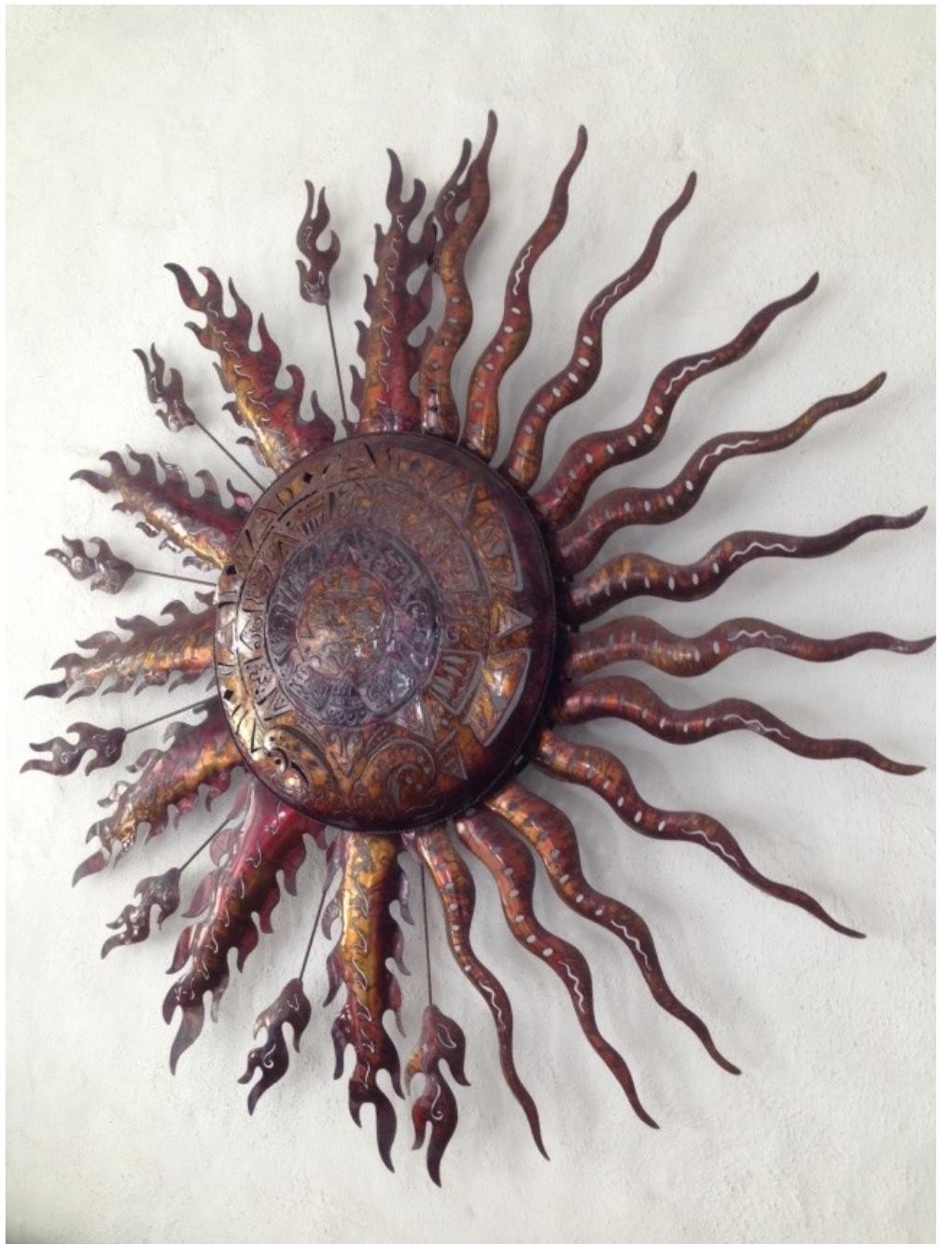
Once a person adapts to the humid salt air in Manzanillo, the household issues definitely take a backseat to the glory of the sunshine, the beaches and the lifestyle. Wherever one goes, there are always those little nagging things that need to be managed. We love where we live; the magnificent bay view;dipping in the pool and walking the beaches. A few household chores are taken in stride and we look forward to many wonderful years of seaside living.
Download the full edition or view it online
—
Suzanne A. Marshall hails from western Canada and has been living the good life in Manzanillo over the past 8 years. She is a wife, mom and grandma. She is retired from executive business management where her writing skills focused on bureaucratic policy, marketing and business newsletters. Now she shares the fun and joy of writing about everyday life experiences in beautiful Manzanillo, Mexico, the country, its people, the places and the events.



